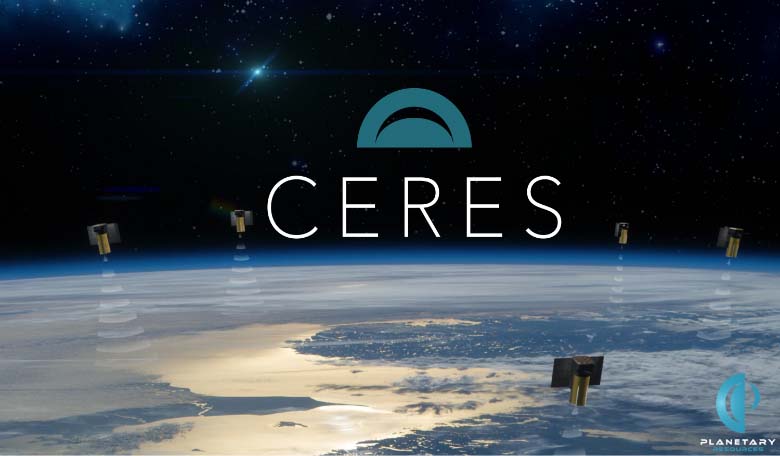Planetary Resources, Inc., the asteroid mining company, has announced that it was secured the funds for the deployment and operation of Ceres in Series A funding. Ceres is an advanced Earth observation business that features the first commercial infrared and hyperspectral sensor platform to better understand and manage humanity’s natural resources. The company has secured $21.1 million. The funding was led by Bryan Johnson and the OS FUND; and joined by Idea Bulb Ventures; Tencent; Vast Ventures; Grishin Robotics; Conversion Capital; The Seraph Group; Space Angels Network, a syndication of investors from Angel.co; and Larry Page. Earth observation will be another aspect of Planetary Resources’ operations in addition to prospecting and mining asteroids.
Planetary Resources, Inc., was founded in 2009 by Eric Anderson and Dr. Peter H. Diamandis. The company’s vision is to establish a new paradigm for resource utilization that will bring the Solar System within humanity’s economic sphere of influence. In their efforts to identify the most commercially viable near-Earth water-rich asteroids, the company has developed a number of transformative technologies that are used in global markets, including agricultural, oil and gas, mining and insurance industries.
Ceres will leverage Planetary Resources’ Arkyd spacecraft to deliver data on natural resources from any spot on the planet. While typical satellite imagery provides only a picture, Ceres will provide actionable data with higher spectral resolutions – going beyond what the human eye can see – by measuring thermographic properties and detecting the composition of materials on Earth’s surface. The midwave-infrared sensor is the first ever commercial capability from space to offer thermographic mapping and night-imaging, and the hyperspectral sensor includes 40 color bands in the visible to near-infrared spectrum.
The imaging technology is integrated onto the Arkyd spacecraft and deployed as a constellation of 10 satellites in low-Earth orbit. Ceres can analyze the spectral signatures of crops and provide customized information to growers, identify energy and mineral resources, and monitor pipelines and remote infrastructure. The system can also track toxic algae blooms, monitor global water quality and enable the detection of wildfires in their earliest stages.
Planetary Resources is currently testing Ceres’ sensor platform and will demonstrate the technology in space with an upcoming scheduled launch of the company’s Arkyd 6 spacecraft onboard a Space X Falcon 9 rocket. The mission will validate the thermographic sensor and supporting technologies for the Arkyd series of spacecraft.
“As we continue toward our vision of the expansion of humanity and our economy into the Solar System, our team has been working on the critical technologies required to detect and identify the most commercially viable near-Earth asteroids and their resources,” said Chris Lewicki, President and CEO, Planetary Resources, Inc. “To characterize these resources, it required more than just a picture, and our team has developed advanced spectral sensors to serve this need. We have also created new technologies for onboard computing, low-cost space platforms, and are now applying these transformative technologies in additional markets.”
Bryan Johnson, Founder of OS Fund and Board of Director member at Planetary Resources, Inc., said, “With Ceres, Planetary Resources has leapfrogged traditional imagers for monitoring Earth’s natural resources, creating far-ranging opportunity. It’s a seismic shift for the new space economy.”











